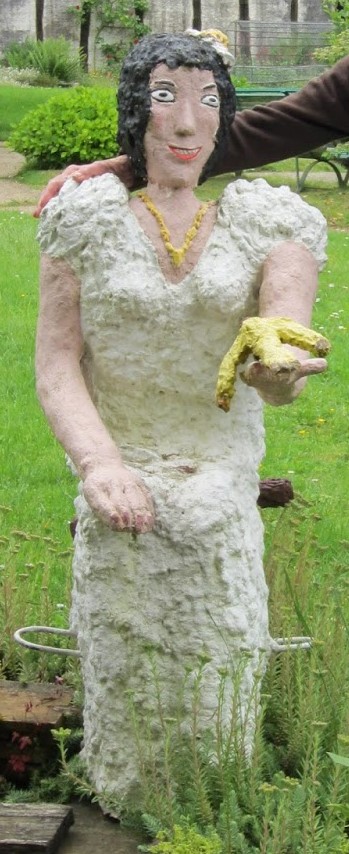FR
Charles Pecqueur est né en 1908 à Bruay-en-Artois dans le Pas-de-Calais où il travailla comme mineur dès l’âge de 13 years old. Après s’être engagé dans la Résistance pendant la seconde guerre mondiale, il devient conseiller municipal à la Libération avant d’être élu maire communiste pendant une vingtaine d’années à Ruitz près de Béthune. Pour embellir la commune, Charles Pecqueur aménage en 1965 sur un rond-point une fontaine agrémentée de sept nains, aujourd’hui détruite. Cependant, ce créateur autodidacte ne se limitait pas à l’espace public. En effet, Charles Pecqueur avait envahi les façades de sa maison en les ornant d’aplats en ciment représentant les Fables de La Fontaine ou l’histoire de Blanche-Neige. Si ces fresques ont malheureusement disparues, quelques-unes de ses sculptures en ciment représentant des oiseaux ou des chiens ont pu être sauvées. Dès l’année 1972, Alain et Caroline Bourbonnais rencontrèrent Charles Pecqueur et lui commandèrent plusieurs œuvres aujourd’hui installées en partie sur le mur-présentoir du jardin habité et sur les bords de l’étang.
EN
Charles Pecqueur was born in 1908 in Bruay-en-Artois in the Pas-de-Calais where he worked as a miner from the age of 13. After joining the Resistance during the Second World War, he became a town councillor at the Liberation before being elected Communist mayor for some twenty years in Ruitz near Béthune. To embellish the town, Charles Pecqueur built a fountain with seven dwarfs on a traffic circle in 1965, which has now been destroyed. However, this self-taught creator did not limit himself to the public space. Indeed, Charles Pecqueur had invaded the facades of his house by decorating them with cement flat tints representing the Fables of La Fontaine or the story of Snow White. If these frescoes have unfortunately disappeared, some of his cement sculptures representing birds or dogs have been saved. In 1972, Alain and Caroline Bourbonnais met Charles Pecqueur and commissioned him to create several works that are now partly installed on the display wall of the inhabited garden and on the banks of the pond.

